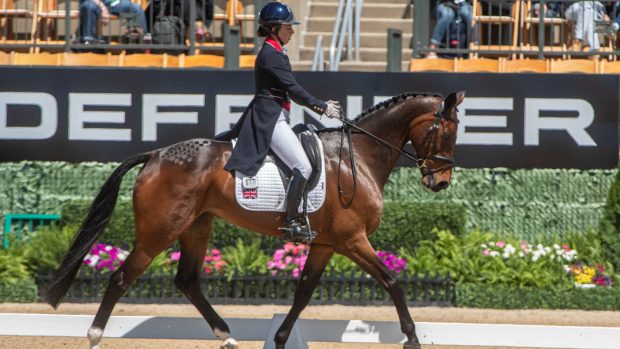Event rider and dealer Karen Dixon never minds if a horse throws a playful buck. But if playfulness becomes a serious protest, or the horse bucks habitually, warning bells start to ring.
“In our job, the horse has to have a bit of character,” says Karen. “He’s got to feel as if he’s the kingpin.
“I never mind a buck if it’s simply joie de vivre. Sometimes, the horse can be a bit tight in the back when you first get on, and a youngster might ‘bronc’ a bit. But if a horse is bucking and bucking, I think there’s likely to be something wrong and I’d get the back checked.”
Occasionally, she finds that a fit event horse will buck from excitement. One of her former rides, Fosseway Surprise, taught her how to stay on and how important the right psychological approach is.
“Fosseway Surprise used to buck like hell,” she recalls. “He did it in the collecting ring before the show jumping or cross-country. You had to entertain him and give him plenty to think about. When it was time for the cross-county, I’d always get there a tiny bit late so it would be a case of ‘Here we are, let’s go.”
Karen finds that tact usually works better than confrontation.
“I’ve learned not to confront a fresh horse head on. If you take him for a spin first, you can then ask him to work.”
Similarly, if a horse bucks in reaction to pressure while schooling, she will give him something else to think about.
“If he bucks away from the canter transition, puthim in shoulder-in, then soften your aids and ask for canter again. Don’t get locked in to a problem. Make him think about other things.”
Karen says it is also important that tack fits well and is comfortable.
If a horse does buck, the rider can still aim for damage limitation.
“Keep the horse’s head up, which means keeping the reins short and using your legs. Sit close to the saddle – you’re less likely to fall off if your stirrups are at jumping rather than dressage length. Keep your hands close to the withers, and if he tries to put his head down, you can put one hand on the neck and check with the other.”



